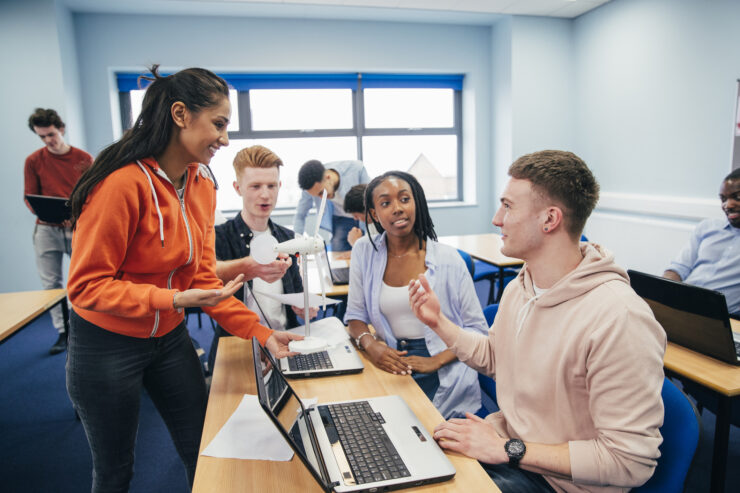Challenging your own bias

A teacher avoids calling on a shy Japanese student in class because the teacher assumes that her English is not very good and it would not be culturally appropriate to put her on the spot in front of the other students.
Implicit bias refers to the collection of unconscious attitudes, reactions, stereotypes, and categories that impact upon our behaviour and understanding. Implicit bias can become visible in various ways, such as by making different assumptions about your students based on their ethnicity or socio-economic status. It can relate to students who you perceive to be different to you but also to students with whom you perceive a shared identity. Biases are important to challenge as they can be incorrect and may perpetuate stereotypes that can be detrimental for students’ learning and professional life. For example, students frequently confronted with a stereotype may be “at risk of confirming, as a self-characteristic, a negative stereotype about one’s social group”. Studies have demonstrated that negative stereotypes in relation to performance can become a self-fulfilling prophecy, with detrimental impacts on learning and self-confidence. , Spencer, S. J., Logel, C., & Davies, P. G. (2016). Stereotype threat. Annual review of psychology, 67(1), 415-437.
Ramdas, S., Slootman, M., & Van Oudenhoven-Van der Zee (2019). The VU mixed classroom model.
Tools
Challenging your own assumptions
- Reflect on your own identity, your own position as a teacher, and on the interactions and power relations between you as a teacher and your students. Complete the critical self-positioning activities created by the UU anthropology toolbox: Exercise 1- Social identity wheel Exercise 2- Research identity wheel and Exercice 3- Personal identity wheel.
- Solicit feedback from outsiders. Rely on your network of teachers to ask for feedback through an observation tool like the College and University Classroom Environment Inventory Appert et al., Guide for Inclusive Teaching at Columbia .
- Solicit feedback from your students. Use a midterm course evaluation to assess whether/how your implicit bias manifests in your classroom interactions. Invite your students to use the Reflection Tool to provide feedback on your course.
- Instead of assuming, ask students if they have any experience/expertise in a particular area or topic and would like to share LSA Inclusive Teaching University of Michigan: Implicit bias .
- Avoid generalisations. Make sure to include all students in a discussion and make it explicit that a student’s perspective is not representative of their demographic/target group LSA Inclusive Teaching University of Michigan: Implicit bias .
Convey the same level of confidence for all your students and provide them with equal chances (Inclusive Teaching at Columbia)
- Set explicit expectations for your class and all students. Communicate learning objectives, course goals and overall expectations of student attitudes and behaviour Appert et al., Guide for Inclusive Teaching at Columbia . For example, explain the course objectives but also the ‘non-written’ rules of the ‘model’ student at UU. Discuss/debate what these rules are with your students.
- Endeavour to pay attention to/make eye-contact with all – not just some – of your students UCLA creating a positive classroom climate for diversity .
- Pose challenging questions to all your students irrespective of their background UCLA creating a positive classroom climate for diversity .
- Be even-handed in acknowledging your students’ contributions to class as well as their accomplishments UCLA creating a positive classroom climate for diversity .
- Ensure that the feedback and grades you give out correspond solely to the quality of your student’s work. To ensure an absence of bias, use blind-grading where possible (for more information please check the Assessment section)
Responding to a microaggression
Most people, whether they know it or not, will at one point cause a microaggression. A microaggression is “the everyday verbal, nonverbal, and environmental slights, snubs or insults, whether intentional or unintentional, that communicate hostile, derogatory, or negative messages to target persons based solely upon their marginalized group membership” Sue, D. W.; Bucceri, J.; Lin, A. I; Nadal, K. L.; and Torino, G. C. (2007). Racial microaggressions and the Asian American Experience. Cultural Diversity and Ethnic Minority Psychology. Vol. 13. No. 1. pp. 72-81 . This is especially the case in an international or inter-cultural setting like UU in the Netherlands. For additional information about microaggressions and examples please see Handling tension and microaggresions in the classroom. As embarrassing, hurtful, or stressful as it may be, there are things you can and should do.
- First, you should be open to hearing from the person harmed in order to understand them and to make them feel heard. An honest apology is also recommended.
- If a student approaches you as the teacher to say that they were offended by something you said, take the time to listen to them carefully. Given the power dynamic in this relationship, it was probably difficult for this student to contact you in the first place. Be open and listen to the listen, and consider modifying your behaviour Treviño, J. (n.d.). Diversity and Inclusiveness in the Classroom. The University of Arizona. .
- If you witness a microaggresion in class between students, it is recommended to speak with the students separately and to facilitate a discussion between them. Participate – and mediate – this discussion if the students request your presence.
Additional Resources
Ambrose, S., Lovett, M., Bridges, M., DiPietro, M., & Norman, M. (2010). How learning works: Seven research-based principles for smart teaching (First ed., The jossey-bass higher and adult education series). San Francisco, CA: Jossey-Bass
Training Bias offered by the UMCU: Training Bias en onderwijs – UMC Utrecht
